Episode #397: Teaching Math with the Brain in Mind: Insights from Liesl McConchie
LISTEN NOW HERE…
WATCH NOW…
Are your students’ math struggles rooted in what they know—or how they feel about math?
If your math learners seem disengaged, anxious, or convinced they’re just “not math people,” you’re not alone—and it’s not a curriculum issue. Decades of research show that emotions drive attention, memory, and learning. That means even the best-planned lesson can fall flat if students come in carrying fear, shame, or confusion about math. In this episode, Liesl McConchie shares how understanding the brain’s emotional wiring can transform the way we teach. You’ll hear why math identity is formed earlier than you think, how to create a learning environment that feels psychologically safe, and what small shifts can lead to major breakthroughs in confidence and engagement.
By listening, you’ll discover:
- Why emotions are always the gateway to deeper mathematical thinking
- How to identify and rewire negative math identities through simple classroom activities
- A powerful 10-minute “Mathland” activity to reveal how your students truly perceive math
Press play now to learn how brain science can help you create a math class students feel safe in—and excited to come back to.
Attention District Math Leaders:
Developing Mathematical Reasoning by Pam Harris [Book]
Not sure what matters most when designing math improvement plans? Take this assessment and get a free customized report: https://makemathmoments.com/grow/
Ready to design your math improvement plan with guidance, support and using structure? Learn how to follow our 4 stage process. https://growyourmathprogram.com
Looking to supplement your curriculum with problem based lessons and units? Make Math Moments Problem Based Lessons & Units
Be Our Next Podcast Guest!
Join as an Interview Guest or on a Mentoring Moment Call
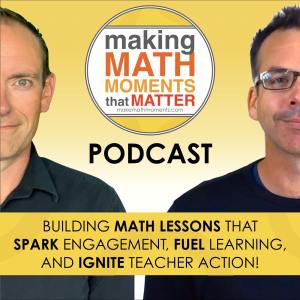
Apply to be a Featured Interview Guest
Book a Mentoring Moment Coaching Call
Are You an Official Math Moment Maker?
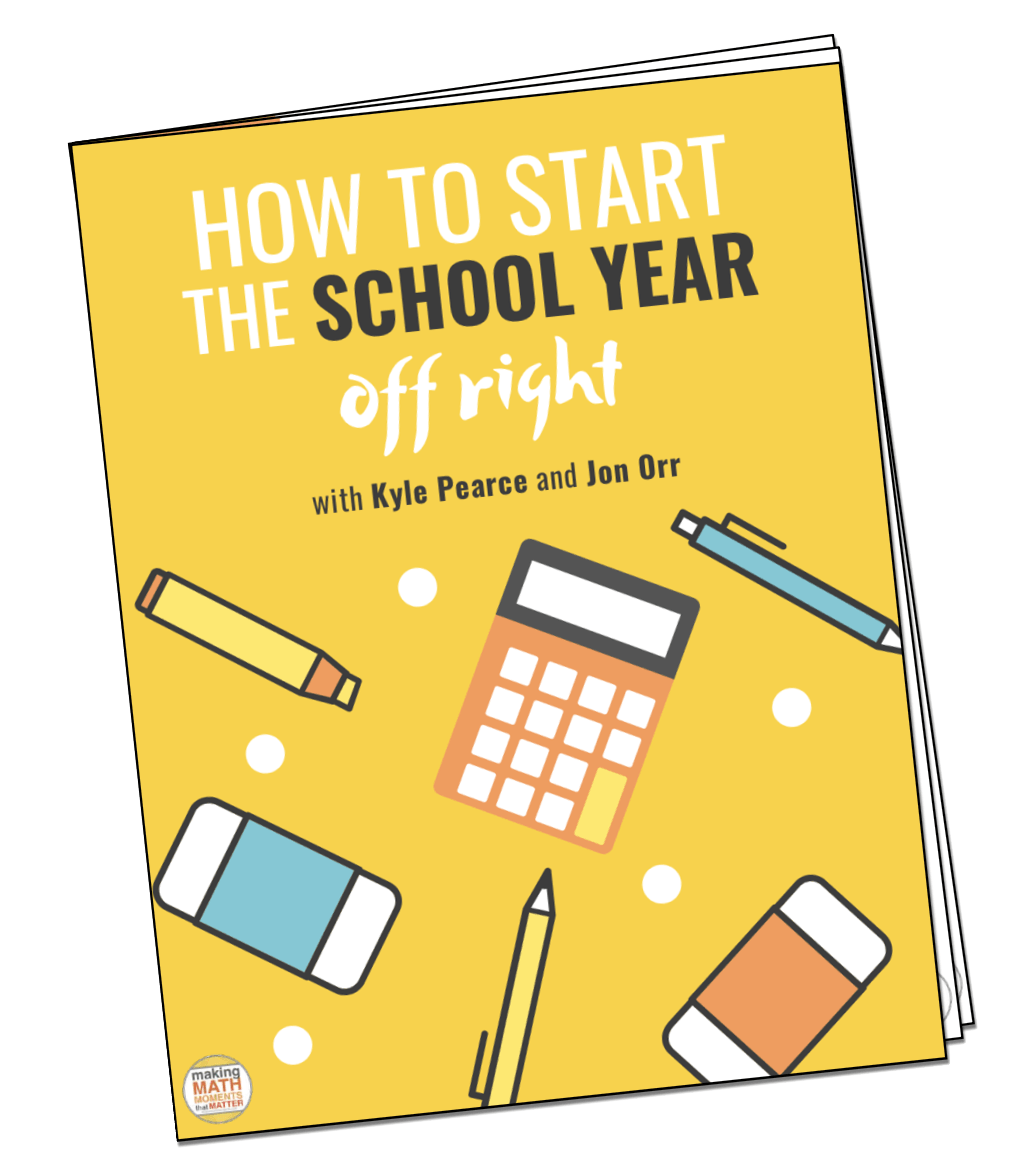
FULL TRANSCRIPT
Jon Orr: Hey there, Liesl, welcome back to the Making Math Moments That Matter podcast. It’s been a long time coming, you We were just looking up. Last time we chatted here on the podcast, it was you, it was me, it was Kyle, was episode 128, which, you know, this is gonna be like episode 400 and something, so we’re talking about a number of years ago that we chatted with you, we chatted with you about the…
brain science and math, I know we want to chat about that today as well. But before we dive in, remind our listeners a little bit about yourself. I know you’re coming from San Diego right now, we just talked about that before we hit record. You’re summertime in San Diego, you’re excited to be there. Give us a quick snapshot and then we’ll dive in.
Liesl McConchie: Yeah, so I’m here in San Diego, California, and I am just spending my summer with my family and getting a lot of things ready for the school year. I’m just really excited to share with so many schools, exciting things happening. What I do is I love to make cognitive neuroscience accessible for all teachers. So I translate cognitive neuroscience. I spend my Friday nights reading academic peer-reviewed
journal articles. I live a really, really exciting life. Everyone should want to be my friend. And I just nerd out on things and then use that with my background of being a classroom teacher from kindergarten all the way through 12th grade to help make applications of how we can use what we’re learning from the science fields to actually make our lives as teachers easier and make learning for our students easier and also more enjoyable.
Jon Orr: Love it, thanks for that. It always gets me when we share our hobbies. Our hobbies tend to be what we focus on and what we want to spend our spare time on. People used to ask me, you prefacing it with, this is what I do with my free time or my spare time or the things I want to do. We used to get asked that question, and I’m sure you get asked this question all the time too, is how do you have as much time in the day?
You know, like how do you make that? And part of me reflects on that like Friday nights, you’re right. Like we’re digging into some of the things that inspire us and some of the things that we wanna learn about. Like we all do this, whether it’s like, you know, some people are like, I’m all into baseball and I wanna continue to learn about baseball and I watch baseball and I learn about baseball and that’s all I do all summer long. In a way, like that’s not me. Like I’m not a, like you asked Kyle, he would say like, he’s watching baseball, but.
somebody, somebody like me is like, I’m learning about, you know, what, what my math lessons can be looking at. Like I’m thinking about my lessons coming up this year. I’m thinking about the work that we’re doing. Mostly it’s just cause that’s my hobby. That’s where my brain wants to go when it has free time to think because it excites me. You know, like we all do things that inspire us in our path. We’re passionate about, and we call those our hobbies. And so you, you know, when I hear that, I’m like, that’s exactly my jam too. It’s not, it’s not brain science. That’s why you’re here to talk to us, but
I have the other other things, I mean like following our passions spending on a Friday night is some people are like, you’re like, like, that’s kind of weird. But I mean, like, that’s what we do. That’s what we do. Right.
Liesl McConchie: science behind that too, because like it’s our hobbies, it’s our interests. And we like the attentional systems of the brain are driven towards what is most relevant and interesting and exciting to us. So, I mean, yeah, like ask me a question about pop culture or the hottest reality show or whatever people are binge watching Netflix. I will embarrass myself in not knowing a single thing about it. I couldn’t give you a single celebrity fact. I couldn’t, I couldn’t like I couldn’t point out a Kardashian in a lineup. Okay, now I’m actually really embarrassing myself. But that’s…
Jon Orr: No, I don’t think that embarrasses you. Not on this show, right? Not on this show. People are like, yeah, like we would.
Liesl McConchie: Okay, so, but the brain is driven towards what’s most relevant. And so what’s relevant to most relevant to me and the work that I do, what I’m most passionate about is helping educators and helping students to be able to learn and understand and have a positive relationship with math. And so because that is my hobby, my passion, my interest, then that of course makes sense what I spend both my mental and my emotional energy on. know, brain science is everywhere, even the Kardashians.
Jon Orr: Right? Yeah, love it. Yeah, we’re gonna get in, because my immediate question is to say, like, we’ve got a room full of students. If their brain is being drawn to what’s passionate to them, what are we doing to harness that? know, like, what are we doing to, like, we want, we want, we’re just as passionate about math. Our students, maybe not, for whatever reason they’re bringing in, and we’re gonna talk about that too, but it’s like, how do we?
think about the brain science and how do we use that in our lessons to help our students make sense of mathematics but also see themselves as mathematicians. So we’re gonna answer that for sure, but before we do, I don’t wanna let this go too farther because our people who have listened to all 400 episodes, because there’s still some out there, there’s probably one, you know? That’s been with us for all these years, but they’re wondering, like, I wanna know the math moment, you know, like the question we ask every single guest. So when I say math class, usually there’s a,
There’s an image, there’s this experience that pops into our minds when we think about math and math class experiences. They stick with us all these years. Usually it’s something from early, early days, our experiences that shape how we view mathematics or how we have viewed mathematics. They can be positive, they can be negative, but they stick with this all these years as kind of like this, in a way, spark our why sometimes. So when I say math class,
What is your math moment? Like what comes to mind as like stuck with you all these years, whether that’s good or bad?
Liesl McConchie: Yeah. Okay. So the first moment that came to mind is actually my earliest math moment from, like public school, from being a student. have some preschool ones. but so it’s, it’s me, I’m in second grade and we are playing that game that many people might be familiar with called around the world. And okay. So students are, chairs are in a circle facing inward. One student is standing behind another student.
teacher standing in the middle of the circle with like flashcards and it’s the seated student versus the standing student behind them. And whoever gets, whoever says the correct math answer to the math fact first gets to move on to the next chair. And the goal is to get around the world, meaning to defeat every one of your classmates. So buy memories of around the world as a second grader, first of all.
I was the queen of the world. I just like owned that game. I was so fast with my math facts and I just like loved it. I was just like, boom, boom, boom. I destroyed all my classmates. And I remember because I’m one those people who decided to be a math teacher at a very, very, very young age. Like it is in my elementary school yearbook. It’s written in like journal entries and then elementary school. It was.
Jon Orr: Hahaha It was your dominance of around the world.
Liesl McConchie: I was like, I’m so good at this. I want to be a math teacher. And when I am a math teacher, I am going to play around the world. This is the math game ever. The best math game ever. Now, because here’s why the brain slants, why I loved it so much and why I wanted to replicate that is because my second grade brain, so whatever, I’m like seven year old, six year old brain, seven year old, was like, this feels so great.
I feel so confident. I’m so good at this. so exactly, exactly. I’m going to all these dopamine hits. It feels so great to me. And so I want that feeling for everyone. So noble ambitions, right? I really did unconsciously understand that students emotional relationship with math really paramount to their cognitive relationship with math.
And it made me enjoy math. It made me want to do more math and to give more effort with math. Now, what my second grade brain did not understand was what was happening in everyone else’s brain. And this is why I have never played around the world and will never play around the world with any group of students ever. And that’s because one, it pits students against each other versus creating a community of learners supporting each other. And it reinforces speed.
and rightness like so fast, like it just has so many other values that I no longer value. And although it gave me some really great feelings, I’m not the one in the class who needed that. I didn’t need that. And so that is my earliest math moment that has like really like, it was so, it was such a defining moment for me in one way. And it’s just so interesting that it’s like completely flipped. and some of my beliefs about specific practices since then.
Jon Orr: We think about bigger picture to that moment and not specifically that game, like how, and maybe we do think about that moment for a sec, like think about the teacher in the moment. Like how do we teachers recognize when a student’s resistance to math is emotional or.
maybe it’s academic, you know what mean? Like there’s these two pieces that play into our identities and how we’re trying to learn mathematics. It’s like there’s an emotional response and there’s also like our own cognitive understanding of what’s happening in the room. is it really like I’m emotional, my emotional barrier is preventing me from learning right now? Maybe that could be the example we kind of toy with, but also it’s like actually, or I actually just don’t know. And that’s actually partly.
what’s preventing me from engaging here. Like there’s both of these dynamics here and I’m curious to hear like how do we teachers like try to recognize which one we’re really battling?
Liesl McConchie: I’ll keep it really easy. It’s always emotions. It’s always emotions because think about it. If you’re struggling with the cognition of something, with the cognitive side of something, I don’t know how to do this. Like I’m whatever, I’m trying to divide fractions. I have no idea how to do this. How do you feel about that? How do you feel in that moment?
Yeah, you’re certainly not feeling hopeful or confident. Right, your blood, your blood, your brain is not being flooded with the neurotransmitters, the hormones, the chemicals that are going to help you to learn. And so whenever students are feeling frustrated, confused, hopeless, anxious, fearful, any of what we would call like a negative neurobiological state,
Jon Orr: I don’t have my dopamine hit like you were getting going like, hey, let’s do more of this.
Liesl McConchie: that is going to impact their cognition. And so their cognition will not progress at the speed with which we want it to until we navigate that emotional state first. This is why I say a student’s emotional relationship with math is foundational to their cognitive relationship with math. We have to be able to tend to emotions first. And this is where I’m at after like 25 years of studying the brain and how it learns.
that when students are in a positive emotion state for learning, they’re feeling hopeful, confident, curious. They find it relevant. They’re anticipating what’s going to happen next. Some of these really positive states. Then, like the brain releases this beautiful, look at me, I get so excited. This is me on Friday night. The brain releases this like cocktail of neurochemicals and hormones and transmitters that activate certain regions of the brain that make learning easier.
Jon Orr: Right, and it probably does the opposite, right? Like when we’re feeling threatened, like think about that whole fight, flight, you know, response, you hear about this in the news, in the movies, they’ll call it the lizard brain, like this brain that we have, it’s like this, if we’re prevented with threat, I don’t feel safe, there’s no way I’m doing any learning. Right.
Liesl McConchie: techno, especially in a social setting when you have like 25, 30 of your peers next to you. Why on earth would I make any kind of risk? Raise my hand, ask a question. way. Because the brain’s driven by survival.
Jon Orr: And survival to middle schoolers and high schoolers is social, whereas your kids who are the young aren’t experiencing that threat at that point. this is why they’re like, pick me, pick me, pick me, versus the middle schoolers and the high schoolers are like, don’t even look at me. Don’t make me stand up and do around the world. Because around the world, would be the end of the world for those kids, most of those kids, other than lesels.
Liesl McConchie: Yes, right. Good. Don’t make eye eye contact. Don’t make eye contact. Right. Thank who don’t need it and it’s just going to blow up.
Jon Orr: Yeah, that was that was also my moment to it wasn’t around the world, but it was because it wasn’t it wasn’t public facing. It was like but it was like, I could do any sort of flashcards, worksheets, I would just hammer worksheets within that. But my but my dopamine hit was like, the sticker, give me the sticker. I want I want that puffy sticker, the hologram sticker. Like that was that was where I was the same. It was like, it’s helped. My brain is saying, yeah, let’s do more of that because I get recognition. for being like, you know, this is my thing. That’s my jam.
Liesl McConchie: Yeah, and stickers work in the early ages. This is a bonus topic. But what most teachers realize, we know that like acknowledging students really helps giving them this like hit of dopamine. But what, you know, having taught kindergarten through 12th grade, I’ve learned that motivating students looks differently based on developmental grace. When I was teaching 12th graders, like a sticker, a puffy sticker, like it’s not going to get the job done, right?
Because the brain, when we use these extrinsic motivation systems, yes, they release dopamine. Yes, they feel good. Yes, you’re going to have kids. Like my kid comes home from school with a sticker on his arm and he’s like, mom, look at the sticker I got. And he’s so excited to go back to school and get the sticker the next day. years later, the dopamine, here’s like our nugget of neuroscience.
The brain desensitizes to dopamine. So what, yes, you need bigger stickers and the bigger stickers become bigger stickers and then they become like tickets that get exchanged in the treasure box. And then that wears off and then you’re tossing out fun-sized candy bars.
Jon Orr: Yep, we need bigger stickers. It’s the problem with stickers, right? It’s the problem with external motivation, probably, like, as an issue as, like, trying to get kids to learn this way.
Liesl McConchie: Yeah. Yeah. And why it’s not an effective long-term strategy that really, you know, then like by middle school, you’re like promising pizza parties and donut parties every Friday for whatever metric that you’re trying to motivate students. And by the time they get to high school, you know, high school teachers who are listening, you know, like the intrinsic motivation path leads you to having like giving away like a five-day cruise to try to get kids to turn in all their homework assignments, whatever. Anyway. That’s not exactly what we’re here to talk about today, but.
Jon Orr: Well, you know what I think, I think partly, it is like, you know, I think you’re, you’re trying to say it’s, it’s, it’s very much related because we’re wrapping up how we, how we’re trying to learn in our classrooms to what makes sense with our actual brains and what’s happening inside of our brains and how we progress and how we develop say our identity. So when I think about like our identities, I think this is something I think I’ve heard from teachers, you know, at the lunchroom table, you know, I think we hear this a lot too. It’s like,
our experiences or our kids are bringing with them into the classroom their own identities from their past experiences. And I think the term that sometimes you hear is that it’s like they’re get wired. It’s wired into the brain that they’re not math people or they’re not, you know, this isn’t their thing. Like you’re gonna find your thing, but this isn’t your thing, right? Like you’ve proven that by the sixth grade, this math isn’t your thing. Like it’s almost like we’re saying it’s wired.
are wired into our brains. know, I know. But here’s what’s like, but I think we all wonder is like, is it wired into our brain at that point and can we unwire it? Like rewire our brains or is it too late?
Liesl McConchie: It’s definitely not wired into our brains. So I have been deeply studying the neuroscience of math identities for many, many years now. And so I have this new book coming out in just a month. It’s called Building a Positive Math Identity, a Brain Science Approach. And when you look at the cover of this book, you will see why I chose the cover based on what we’re about to talk about, okay?
The cover of the book is a beautiful, I just think it’s like the sexiest book cover. It is, can I say that on the podcast? I just did. It just happened. It is, it’s a watercolor.
Jon Orr: You can say whatever you want.
Liesl McConchie: of a woman and her hair and like kind of like some brain stuff like swirling around in there. And I intentionally chose that cover because the premise of the book is that our math identity is not wired. It’s not set in stone. It’s a masterpiece that is constantly evolving. Now even watercolors from acrylics, let’s talk art here for a quick minute, that when you paint, most paint like dries.
And then your painting is done. And it’s just like, it’s set in stone and your paint, like that’s it. With a watercolor, even if the watercolor painting was established years ago, you can still take a paintbrush, dip it in some water and you can reactivate that paint and you can reshape what that masterpiece looks like.
And that’s from a neuroscience perspective, that’s what can happen in our students’ brains with their math identity. They are always changing. And every action that we do in our classrooms with our students is like that paintbrush that is either reactivating, you know, past math traumas or past bad math experiences. Anytime, you know, students see the chairs in a circle.
with the teacher holding the set of flashcards, that can reactivate the paint and the memories around them being publicly shamed and playing around the world or anything around their math identity, their math history. Versus creating a new positive experience with math where they, math is connected to something that’s really relevant to them. And it’s like, look at that. That’s a bright, shiny color right here that actually like,
I’m attracted to because this is relating to my culture or my identity or a hobby that I really enjoy because I am like leading a culturally responsive math classroom. But it’s so yes, it’s not wired. It’s constantly changing.
Jon Orr: Yeah, right, right, right. And obviously what you’re just saying is like the repeated experiences we have in our classroom helps with that rewiring and we could perpetuate that what we do in here won’t change it or what we can do here will change it. So one of my instructional wonders is what are some of those moves that we’re making in our class where
I think we think we’re doing have good intentions. Like your teacher thought they were had good intentions with around the world. Otherwise they wouldn’t have done it if they thought they were hurting, you know, other students in their, in their relationship towards mathematics. I think, I think a lot of the folks listening to this podcast right now know about around the world and it’s say detriment to our own understanding and beliefs around our math identities.
But what are some others that we may be have overlooked along the years of the work that we’re doing in our class? Like what are some of these practices that we’re like, oof, let’s do less of that and more of this.
Liesl McConchie: Yeah. So going back to the emotional piece, the key is, know, when we, let’s get really practical. When we’re planning a lesson, we’re often asking ourselves, okay, what am I teaching today? And when I was a brand new teacher, you know, like over 25 years ago, it like back in the nineties, I was like, okay, what am I teaching today? And that is, that was like the end of my reflective question. am I today? Right. Yeah. And, and then I evolved as a teacher.
Jon Orr: That’s it. What are my examples that I’m gonna go over?
Liesl McConchie: And I was like, okay. And I realized that I’m actually teaching students. I’m not just like teaching math. so I became, so I expanded my preparation to be, what am I teaching today? Who am I teaching today? Who, who is in front of me today? Who are they and what are they interested in? And what do they already know? And what do they need to know to move to the next level?
And, and, and a lot of us are doing that. Here’s the third level that I love to invite teachers into. And that is ask yourself, what am I teaching today? Who am I teaching today? But then what state, what emotion do I want them feeling today and how am I going to get them there? And so.
Sometimes we feel like emotions are out of our control. Like they just happen. I started teaching my teaching career back in the 90s with middle schoolers. I remember thinking like, my gosh, please, can we just get rid of all emotions? They’re just getting in the way. But instead now it’s like, okay, they’re here to stay. They’re not going anywhere. They drive everything that we do. How can we harness this to help support the work that we’re doing in our classrooms? And instead of thinking like they’re just like swirling around.
Teachers have so much influence over the neurobiological state of our students. What I mean by that is we have so much influence as to whether our students feel curious or frustrated, whether they find this math relevant or whether they can find it like useless, whether they are anticipating math time or whether they’re dreading it and how they feel as they start math class, as they start math time, how they feel throughout math time.
has a lot more to do with how well they’re going to do on their assessment than the actual examples that we have been pulling from.
Jon Orr: Right, yeah. I’ve got thoughts floating up in my mind, because one is like, well, okay, what does that exactly look like for me as a teacher? then, and this is me thinking in live time right here, is now going, I’m a teacher and I want to make that happen, but then my brain, my safe brain goes.
How do I make that happen and how do I make sure that that’s a priority for me when I’m constantly going like, I also don’t feel safe if I try to go down a pathway to change the way, because I’m like, I need my class to be rigorous. What am I teaching my students if I’m trying to focus on their emotions first and creating these experiences when next year’s class teacher is looking in
peeking in my window and now I’m like, there’s my emotion interfering with what I’m trying to do or what I know is right in my classroom. It’s like there’s this fractal moments happening here, like, our teaching decisions are also influenced by our emotions and not knowing where the pressures actually come from because we could go down those roads but I’ve got these barriers also that I have to deal with. I guess,
I don’t- we don’t need to go- we don’t need to go down those- that pathway but it looks like you do want to say something because I was gonna throw a question at you because I don’t even ask you a question yet.
Liesl McConchie: well, I wanted to unpack that just briefly. Like, what is the what is the image that you’re holding in your mind when you’re feeling a little bit like worried about what the teacher is it like a circus?
Jon Orr: No, I’m just trying to put myself in the position of some teachers who have these, like, I know I wanna go down a pathway where I transition my class to be more inclusive, to design my lessons to be more curious, to design my lessons to get more thinking and cleansing so that kids are walking out, but they also have this idea that mathematics has to be more rigorous and I have to follow my curriculum, I have to follow the pacing guide.
You know, my teaching team is all following this pacing guide, but they’re doing it this way. And I’m not going to be doing it that way because I have to design my lessons slightly differently to accomplish this goal. And, and there’s pressures for me to deal with that. And how do I do that? And, also manage all these other pressures that I currently have. Cause if I go down that pathway, I’m not going to be on pace. My principal might not understand what I’m trying to.
to do there, even though they probably understand it, but they’re like, well, wait a minute, you didn’t still cover the same stuff in the same time. When we try new things, it always takes us off pace. so I think that’s sometimes what I think a lot of folks deal with. what we hear is more of a permission problem. It’s like, I wasn’t sure I was allowed to go down that pathway. I wasn’t sure I was allowed to modify my curriculum.
because the curriculum pacing guide says, do this, do this, do this, but now how does that play into what I wanna do and am I allowed to go down? Especially middle school teachers, elementary teachers, teachers who are new to a grade level are constantly going like, I’m not sure what’s allowed here. And I think it’s just like a big thing that we all have to kind of wrap our minds around. And for me, it always comes down to like, well, what are we really trying to do?
Like what is your why here in math class and what’s a more priority for you is to have these types of experiences for students because it’s like you could have these barriers in place and then you could say, well I can’t do it because of these barriers. Or you could say like everyone has constraints in their roles, everyone has constraints that they deal with, everyone has barriers but then you have to go like I’m gonna do this no matter what because I think this is the right move and I’m gonna figure out. And that’s my, that’s my.
thing that I have to decide on, I’m gonna figure this out because I know that’s the right move, even though I have barrier A, barrier B, know, barrier C that I’m gonna battle while I do that. Like this is the pathway I think I went down, is knowing that there’s pressures there, but we all have to take that step ourselves. I guess my question to you is just like, what are some of the moves that we make to kind of like make this look like in the classroom knowing that we got all these pressures?
Liesl McConchie: So two things. Two things. There’s two things that we as teachers need that I think would help with this. One is we first need to have a little bit of faith in science. Like once you really, if you really, really believe that emotions drive learning as they do, then you will believe that
Jon Orr: That was a big question. The longest question of all time.
Liesl McConchie: Helping students access these positive emotions will help them learn faster and that these memories will be cemented stronger, meaning you’ll be doing less reteaching in the spring before testing season. So one, have a little faith. And one of the ways that we can do that is two, which is the second thing I’d like to do is suggest that we just reflect. Reflect on your best lessons. Reflect on the lessons that you know your students just like nailed it.
and it just like stuck and they’ve got that topic so well, reflect on what really happened. And I bet that in doing so, you will realize that, wow, reflect on the emotional states that they were in during that time. And then that’s how it stuck so well. Emotions make things stick. Now, I can reflect on my own like teaching practice. When I was a young teacher, second year, third grade, fourth year,
And I was like learning this stuff and kind of like doing this stuff. It did become really big, elaborate things of like completely transforming my entire classroom into a grocery store because we couldn’t afford a field trip to the grocery store to go and study decimals and stuff like that. Now, like it can like be really time consuming. It can really like take a lot of time, but the more you practice it, the more you’re able to really get it down to like, I can do it with just a sentence now.
I can just prompt a sentence with a question. I can just put a question up on the board. I can just say a couple things, drop a couple of little lines throughout my really rigorous lesson to keep them connected and to keep them in these positive states. And that’s something that comes just like with any teaching practice. It comes with like practice and with time. But let me just share briefly one specific activity that I think could help teachers get…
an overview of students’ emotional relationship with math. This is an activity that I created. It’s called Mathland. Because look, we don’t have time, speaking of time, we don’t have time to let every single student lay down on our therapy couch and to share everything about their relationship with math, everything that’s happened in the past and all this kind of stuff. And so here’s a quick 10-minute activity you can do once with your students and you will learn
so much about your students and how they feel about math and thus help you know how to best support the student in their mathematical learning. It’s called Mathland. So I invite students to think about a place called Mathland, which is a land that’s just like dominated by mathematics. It is ruled by mathematics. It could be kind of like Star Wars, Star Trek, like a different planet. It could be a like a
an undiscovered civilization somewhere out on some island somewhere. It can be anything. And I invite them to think, you know, based on how you feel about math, what would this place called math land, what would it look like? Would there be like any kind of living species there? Are they people? Are they like other type of are their antlers? Are their buildings? Are their plants with like just what does it look like? Everything is ruled by math.
And you just let students draw. I mean, it’s basically art therapy, right? Okay. So you give students a few minutes to draw because sometimes being able to communicate and articulate with words or through writing is really difficult, regardless of the age or grade of students that you work with. And I’ve done this activity with students of all grade levels and it is fascinating. You see…
There are some students who draw like this beautiful landscape with like hearts and flowers and sunshine, perfect cemetery with like numbers in different like petals on the flowers and things like that. And this lovely river flowing through the middle, I’m envisioning one right now. But most of them look really different. Sometimes you’ll see a person, I saw this one, a student drew themselves as a stick figure in a giant forest of trees. And the caption was,
lost in the forest. Another one is a student who drew just like a giant bowl or pool with like literally thousands of numbers and digits written in the bowl. And the caption is hashtag confusion, confusing. Gymnastics with a bunch of numbers jumbled together. And you’re like, okay, so they like, they don’t have any like meaning or understanding of how these things together. Others are like these robots.
who are dragging students to this torture chamber identified as school, that like this kid was caught not doing their homework, they’re sentenced to a lifetime of torture doing homework and they’re literally being dragged away from their parents, mom and dad stick figure, help mom, help dad, bye son. And there’s like math is something that only happens in school, this like place of torture. There’s no math out in the real world. It’s separate from people, from people in general.
especially people that you care about. It’s a form of punishment. Like there’s so much that you can learn that, you know, like, and when I know this about my students, I can know like, okay, so we really need to work on healing our emotional relationship with math. Because if this is how you’re coming into my math class, like this is great because this episode, like we’re going to drop this right before school. This is a great first few weeks of school activity to help
you get a quick snapshot as to how students view mathematics. And then from there, you do all the little things. At the bottom of the quiz, hey, write down one thing that, like one positive memory you have with math. Write down one horrible memory, like what happened one time that like, like what, so I can make sure I don’t ever do that in this class. Like you can gather data, you know, in really small and simple ways. It doesn’t have to be this big,
Liesl McConchie: enormous like intervention, but we need to recognize that a student’s math identity is formed by four main variables. Four main variables. I’m so thrilled that MathEd is talking about math identity, but we are only talking about one of them mostly. And we’re moving three. The one we’re talking about is students’ personal efficacy, how they feel about math, like their confidence and their competence, how well they do with math. That’s really important.
John, you mentioned one earlier, and that is our students’ past experiences with math. Everything they bring with them, we can’t just like brush it under the rug and pretend like their past didn’t happen with them. That’s not how the brain works. So like we can like, you know, we all bring baggage with us. We can’t just like hang it on the backpack hook in the hallway and think it’s just gonna stay outside the classroom. no, it’s coming in with them and it’s exploding inside our classrooms every single day.
The second variable is their future relationship with math. It doesn’t even exist yet. So it’s kind of weird to think about it from like a brain perspective. How does the future that doesn’t exist yet impact their identity and how they feel about math right now? But this is where things like representation and belonging come into play. If I’ve never seen someone like me out there doing some cool stuff with math. then I don’t feel like I even have capacity to be a male person. Right, yeah.
Jon Orr: Right, it’s hope, hope, right? It’s like you have to be able to see it.
Liesl McConchie: Yes, exactly. So it’s past and future. Those two come together in a certain region of the brain. We’re not going to get into the details right now. The other two that interplay together is yes, my own personal experiences with math. Of course they play. But the fourth one is the socio-cultural influences. That’s the messaging that’s swirling around us all the time around who is good at math, what it means to be good at math.
All these things we get from our family of origin, pop culture, media, and we’re like, whatever, come on. Like, yeah, they made a little line in that movie that every kid watches, but like, come on, it really doesn’t make, no, no, no, no, no, no, no, no, no, no, It adds up and those brains are firing and wiring together. And those messages are real solid in our students’ brains and we can’t ignore them.
We have to take a few minutes, talk about it, dispel the message, and take a really comprehensive approach to supporting our students’ development of a healthy math identity.
No, those are great. Those are really great to point out so that we, you know, I’m sure some, we’re writing those down. Like I just wrote those four down and like you’re gonna post them like right here when you’re like designing your lessons. Because like you said, when you’re going into your rooms, it’s like we ask ourselves these three big questions, but we should be thinking about these four variables and what students are coming with and what we’re shaping because the variables, when the variables start changing, that’s how those.
That’s how we’re rewiring those brains by thinking about these four variables. Now you said, I think thinking about the first week of school, first days of school, Mathland is a great activity to be doing, but I also know that this used to happen to me at least once during the first day of class, is that some student is going to come up and say,
I’m just, this isn’t my class. I’m just bad at math and they mean it. And we all wonder, I think, what do we say to that kid? We all say something and we do trial and error because every semester or every time you start a new class, someone probably, depending on what grade level, is gonna say it.
And I wonder if someone was coming into your class and they said that to you, knowing all the things you know about the brain and how emotional is so much part of this is what do you say to that kid when they walk up to you and say that before a class starts? Because they want to tell you. just like, I just want this teacher to know this about me. That’s why they tell you. But what do you say back to them?
Liesl McConchie: Yeah. Yeah. It depends on what my relationship is with the student. this is the brand new first hit, so I can’t come back with a witty, like, I’m so sorry for whatever happened to you. That makes you say that like, spoiler alert, you’re totally wrong. Like, that’s what I want to say. I want to say like, you’re wrong. And I’m here to prove you wrong. Don’t spit out your copy. Like, yeah, you’re wrong. so.
Jon Orr: It’s brand new though, right? don’t… Exactly.
Liesl McConchie: I mean, I might say, mean, depending on like kind of like the quick vibe, I’m like, you’re wrong. Because this is bringing up a really important point, John, is that we were talking about all those questions that as teachers, we are thinking about what am I teaching? Who am I teaching? What emotion do I want them to be feeling? Students are walking into our classrooms on the first day of school with a whole list of other questions.
Jon Orr: Body language, yeah. Read their body language and you can say, I can get away with saying this to this kid and it’ll be fine. Right.
Liesl McConchie: that really matter to them. And the very first one, I’ve written an ebook about this, that’s just free to be downloaded on my website. The very first question is this, and it’s about us as the teacher. The question is, are you my ally?
Students are walking in and wondering, are you gonna be my ally or are you an adversary to me? The amygdala is scanning us, our body language, our words, how our classroom looks. Is this person for me or against me? Are they gonna have my back or are they going to be like other teachers and like whatever? And so that’s why I invite teachers to very, very carefully craft the very first sentence you say.
at the start of the school year. It is not, hey, get out your schedules, let’s make sure that you’re in the right class, or like, hi, let’s go through attendance. Like, no, no, no, no, no. Your very first sentence is, hey, before we get started, there’s something I need you to know.
I’ve got your back. I am here to make sure that every single one of you know how amazing your math brain is. And I’m going to do everything I can this school year to make sure that you know it. You know, whatever words feel authentic and genuine to you, but your very first sentence is one, develop allyship and two, like foster belief and capacity in your students. Let them know that you believe in them.
and that you got their back. That’s what they want to know. And then they’re like, wow, okay.
Jon Orr: Yeah, I think that’s the big takeaway for us. Think about going into the first week of school. If we’re already in the first week of school, these are the things that we want to be thinking about. I think that’s a really good way to end here today, because the time has flown by already. And we’re going to put all the…
your website and some of the social places that you’re hanging out at for folks to engage with you after the show or after they hear this. So you can head on over to show notes page to find those links to engage with Liesl. Any, you mentioned the book, why don’t you mention the book one more time because it’s not out yet as at the time of this recording but if you’re listening to this in the future, it’ll come out I believe you said in September. So give us a little plug here for this book that you’ve got going on.
Liesl McConchie: Mid-September 2025, we’re releasing, Building a Positive Math Identity, A Brain Science Approach. The Mathland activity is outlined perfectly, beautifully in the book for you, as well as countless other activities that align with those four variables we talked about. So it goes into briefly the science of how emotions and cognitions are related, but it really dives into all those four variables with multiple activities that you can do.
I mean, I’m a classroom teacher. Like, I get it. Like, time is limited. So they’re really carefully crafted, brief activities that you can do to help students heal and foster a positive relationship with math. Because having studied the brain for over 25 years, like, it is the foundation of all learning. And so, yeah.
Jon Orr: Right, it’s gotta start there. Awesome, thanks so much for joining us here today and I think if our listeners cross their fingers here, we’ll be seeing you and also the Making Math Moments That Matter Summit, virtual summit that’s coming up this November. So looking forward to seeing your session in that free summit that is coming up. Quite soon, know, a couple months. We’ll be seeing your face on those sessions. So thanks again for being here.
Liesl McConchie: My pleasure, thanks for having me, John.
Thanks For Listening
- Book a Math Mentoring Moment
- Apply to be a Featured Interview Guest
- Leave a note in the comment section below.
- Share this show on Twitter, or Facebook.
To help out the show:
- Leave an honest review on iTunes. Your ratings and reviews really help and we read each one.
- Subscribe on iTunes, Google Play, and Spotify.
1 Comment
Trackbacks/Pingbacks
- President’s Message – Belonging – NHTM Mathesis - […] you want to learn more from Liesl, check out this podcast episode of Making Math Moments That Matter for…
Submit a Comment
DOWNLOAD THE 3 ACT MATH TASK TIP SHEET SO THEY RUN WITHOUT A HITCH!
Download the 2-page printable 3 Act Math Tip Sheet to ensure that you have the best start to your journey using 3 Act math Tasks to spark curiosity and fuel sense making in your math classroom!
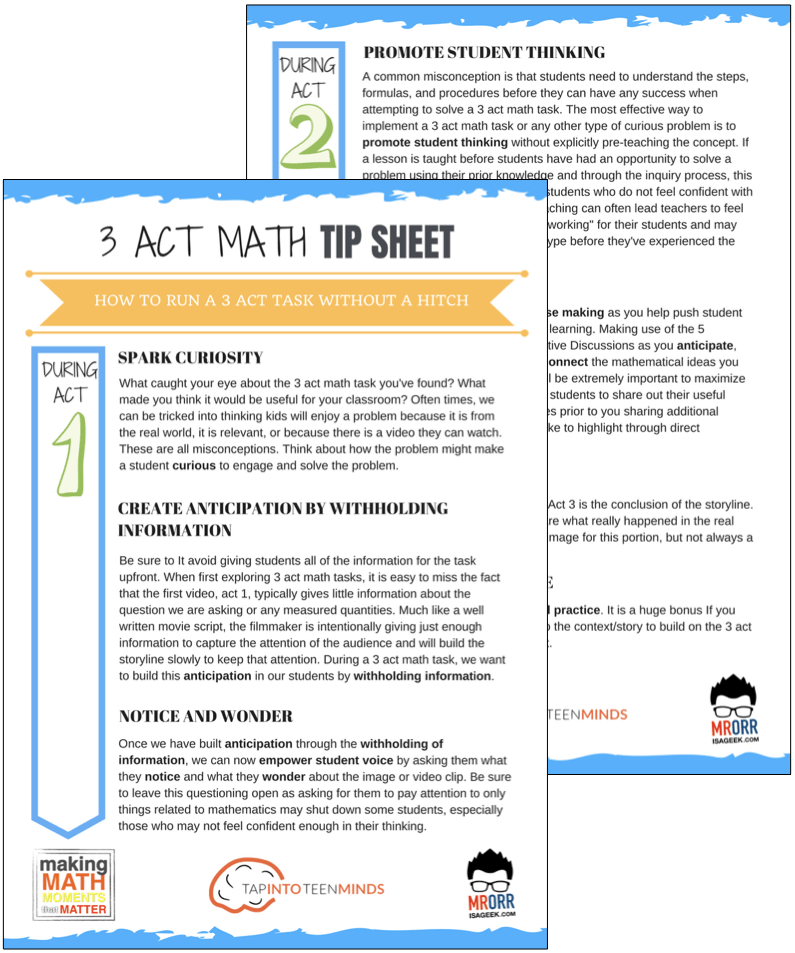
LESSONS TO MAKE MATH MOMENTS
Each lesson consists of:
Each Make Math Moments Problem Based Lesson consists of a Teacher Guide to lead you step-by-step through the planning process to ensure your lesson runs without a hitch!
Each Teacher Guide consists of:
- Intentionality of the lesson;
- A step-by-step walk through of each phase of the lesson;
- Visuals, animations, and videos unpacking big ideas, strategies, and models we intend to emerge during the lesson;
- Sample student approaches to assist in anticipating what your students might do;
- Resources and downloads including Keynote, Powerpoint, Media Files, and Teacher Guide printable PDF; and,
- Much more!
Each Make Math Moments Problem Based Lesson begins with a story, visual, video, or other method to Spark Curiosity through context.
Students will often Notice and Wonder before making an estimate to draw them in and invest in the problem.
After student voice has been heard and acknowledged, we will set students off on a Productive Struggle via a prompt related to the Spark context.
These prompts are given each lesson with the following conditions:
- No calculators are to be used; and,
- Students are to focus on how they can convince their math community that their solution is valid.
Students are left to engage in a productive struggle as the facilitator circulates to observe and engage in conversation as a means of assessing formatively.
The facilitator is instructed through the Teacher Guide on what specific strategies and models could be used to make connections and consolidate the learning from the lesson.
Often times, animations and walk through videos are provided in the Teacher Guide to assist with planning and delivering the consolidation.
A review image, video, or animation is provided as a conclusion to the task from the lesson.
While this might feel like a natural ending to the context students have been exploring, it is just the beginning as we look to leverage this context via extensions and additional lessons to dig deeper.
At the end of each lesson, consolidation prompts and/or extensions are crafted for students to purposefully practice and demonstrate their current understanding.
Facilitators are encouraged to collect these consolidation prompts as a means to engage in the assessment process and inform next moves for instruction.
In multi-day units of study, Math Talks are crafted to help build on the thinking from the previous day and build towards the next step in the developmental progression of the concept(s) we are exploring.
Each Math Talk is constructed as a string of related problems that build with intentionality to emerge specific big ideas, strategies, and mathematical models.
Make Math Moments Problem Based Lessons and Day 1 Teacher Guides are openly available for you to leverage and use with your students without becoming a Make Math Moments Academy Member.
Use our OPEN ACCESS multi-day problem based units!
Make Math Moments Problem Based Lessons and Day 1 Teacher Guides are openly available for you to leverage and use with your students without becoming a Make Math Moments Academy Member.
Partitive Division Resulting in a Fraction
Equivalence and Algebraic Substitution
Represent Categorical Data & Explore Mean
Downloadable resources including blackline masters, handouts, printable Tips Sheets, slide shows, and media files do require a Make Math Moments Academy Membership.
ONLINE WORKSHOP REGISTRATION
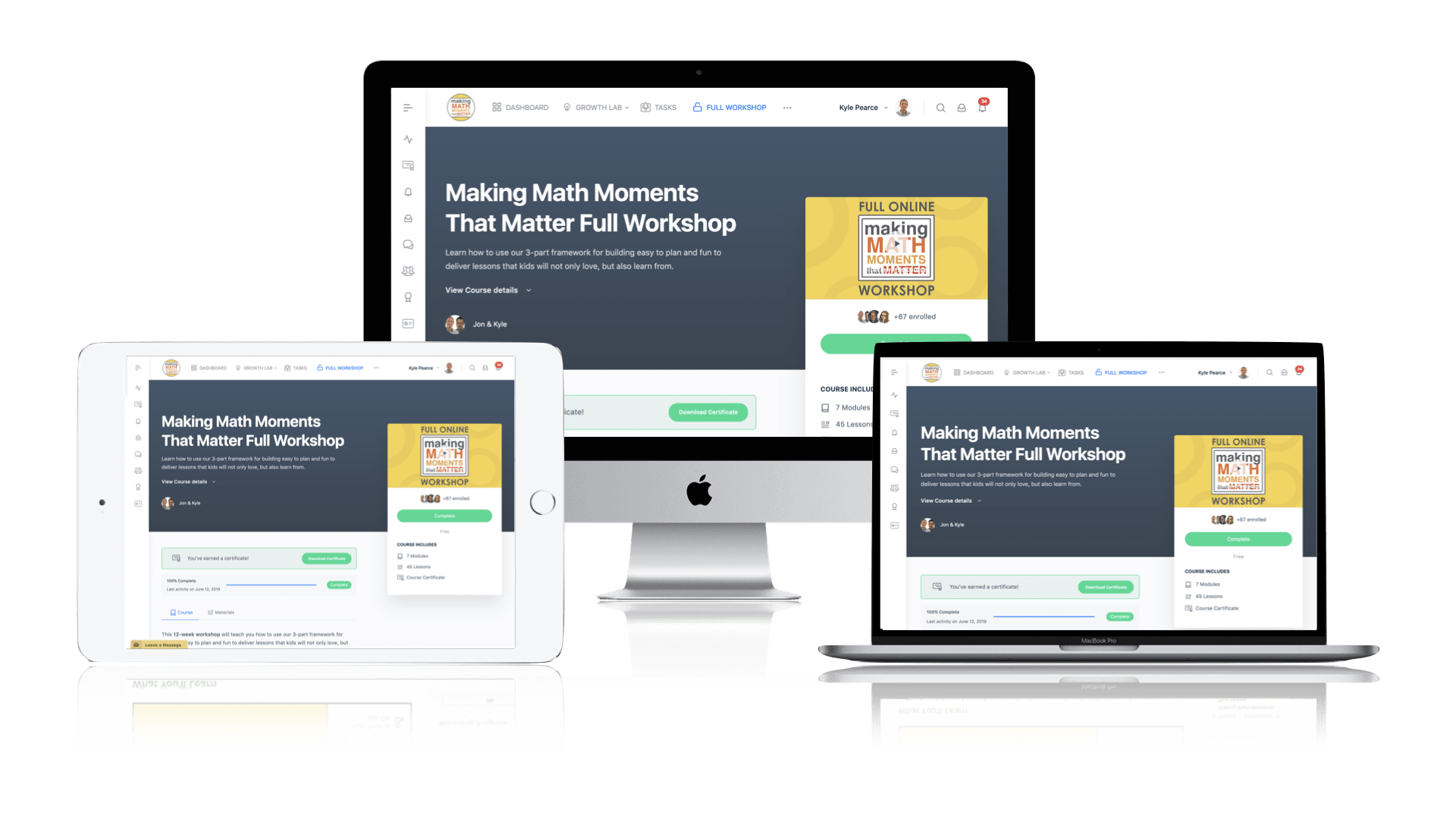
Pedagogically aligned for teachers of K through Grade 12 with content specific examples from Grades 3 through Grade 10.
In our self-paced, 12-week Online Workshop, you'll learn how to craft new and transform your current lessons to Spark Curiosity, Fuel Sense Making, and Ignite Your Teacher Moves to promote resilient problem solvers.
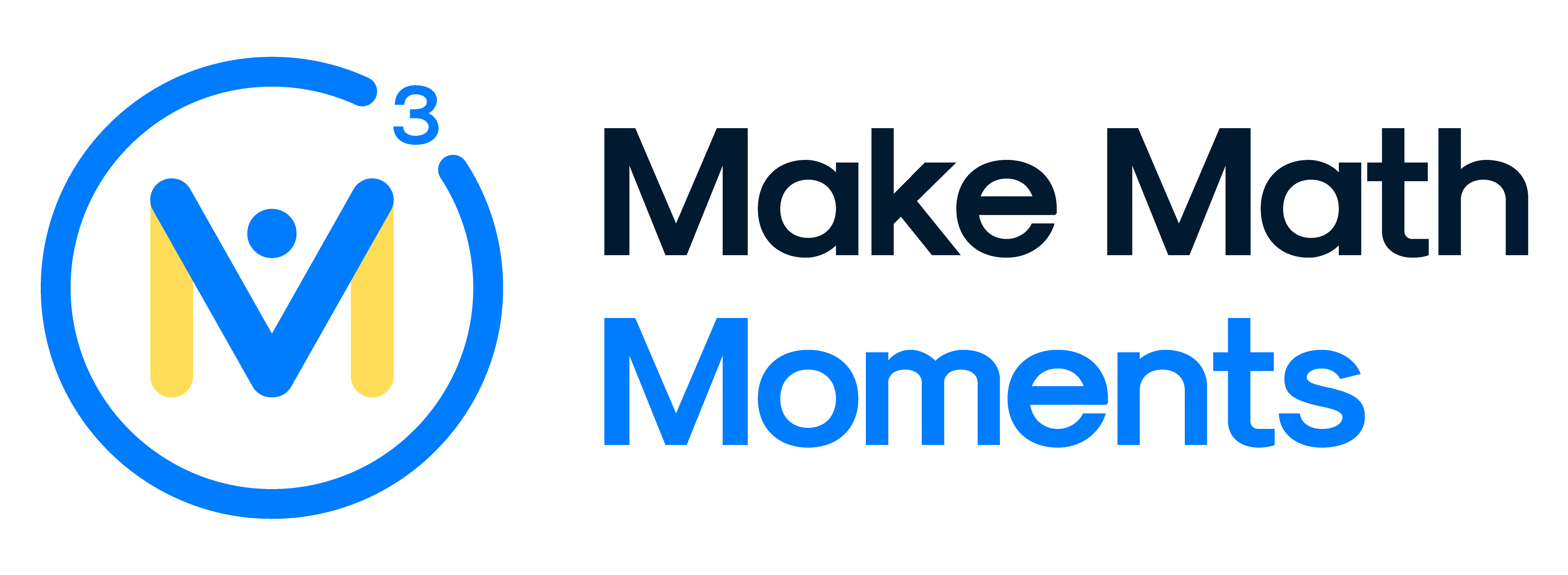



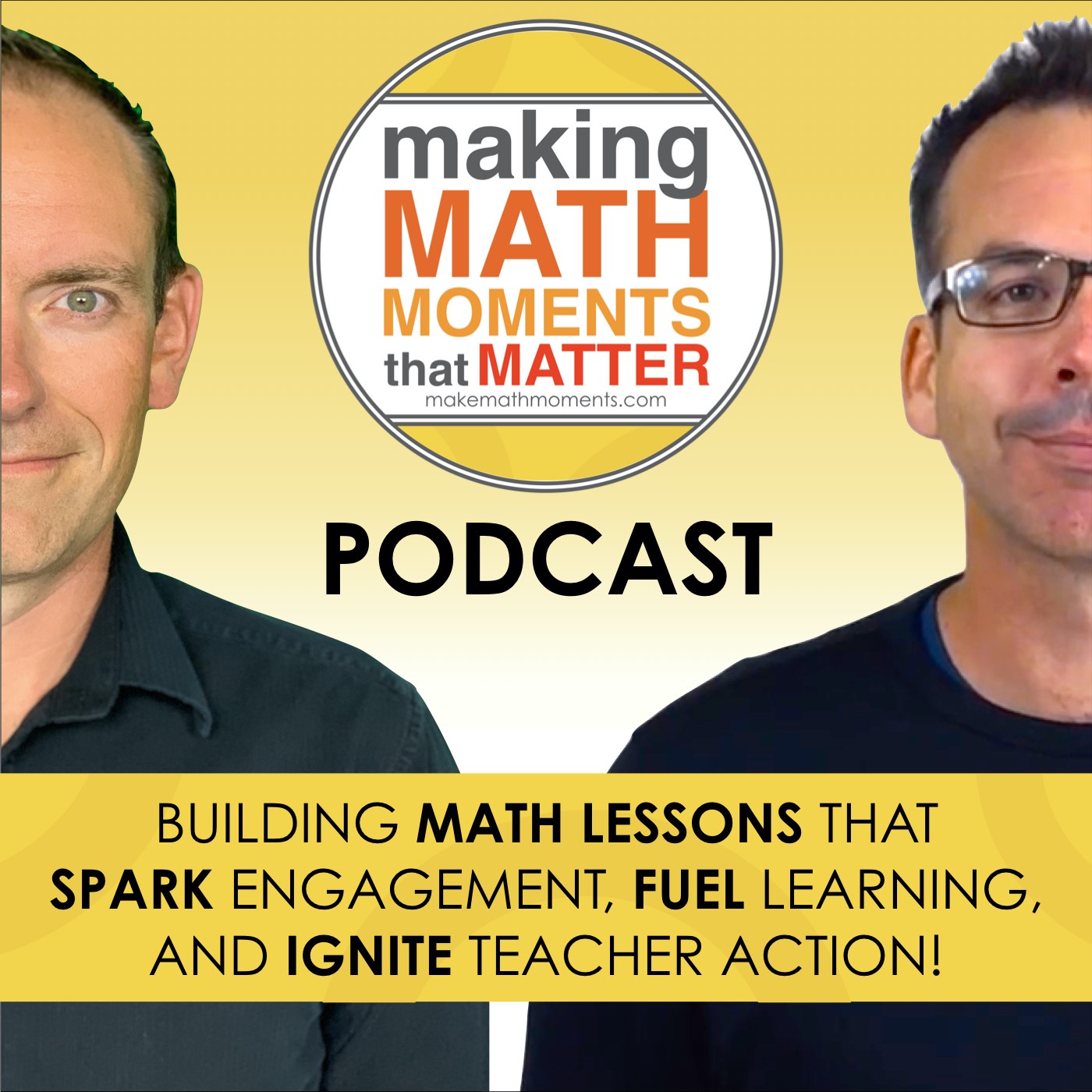
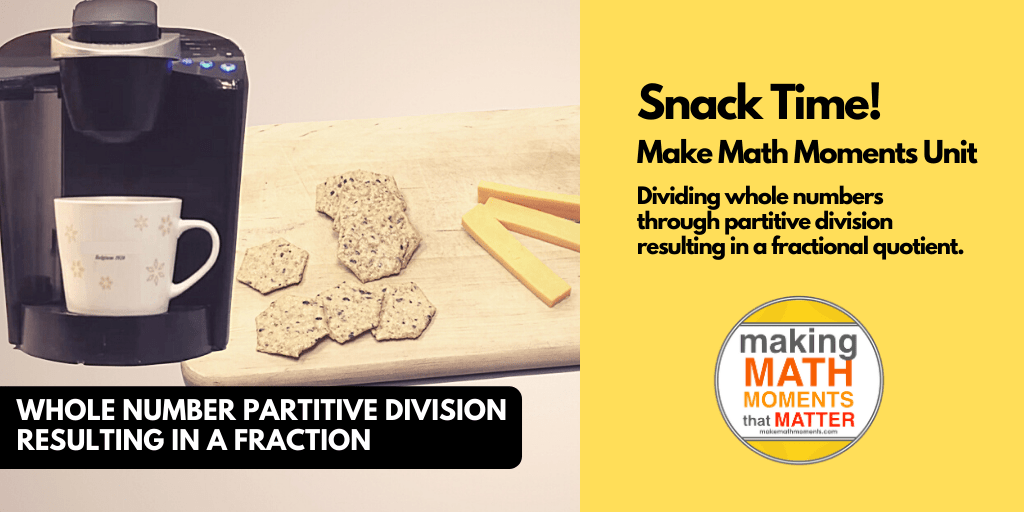

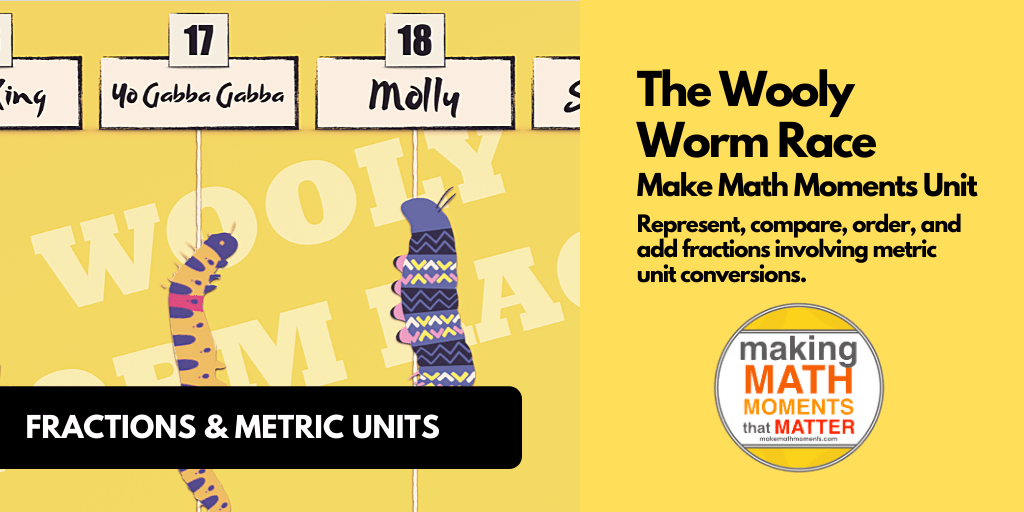
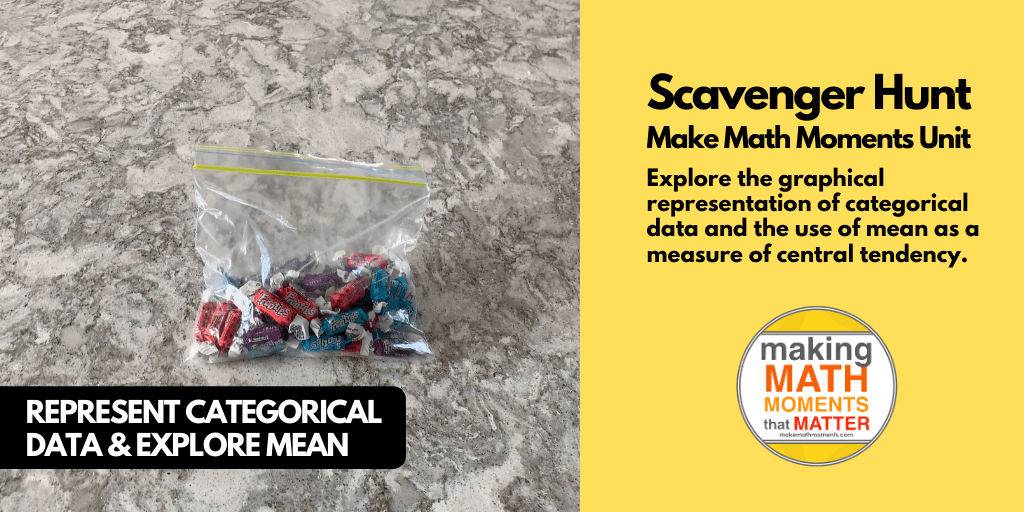
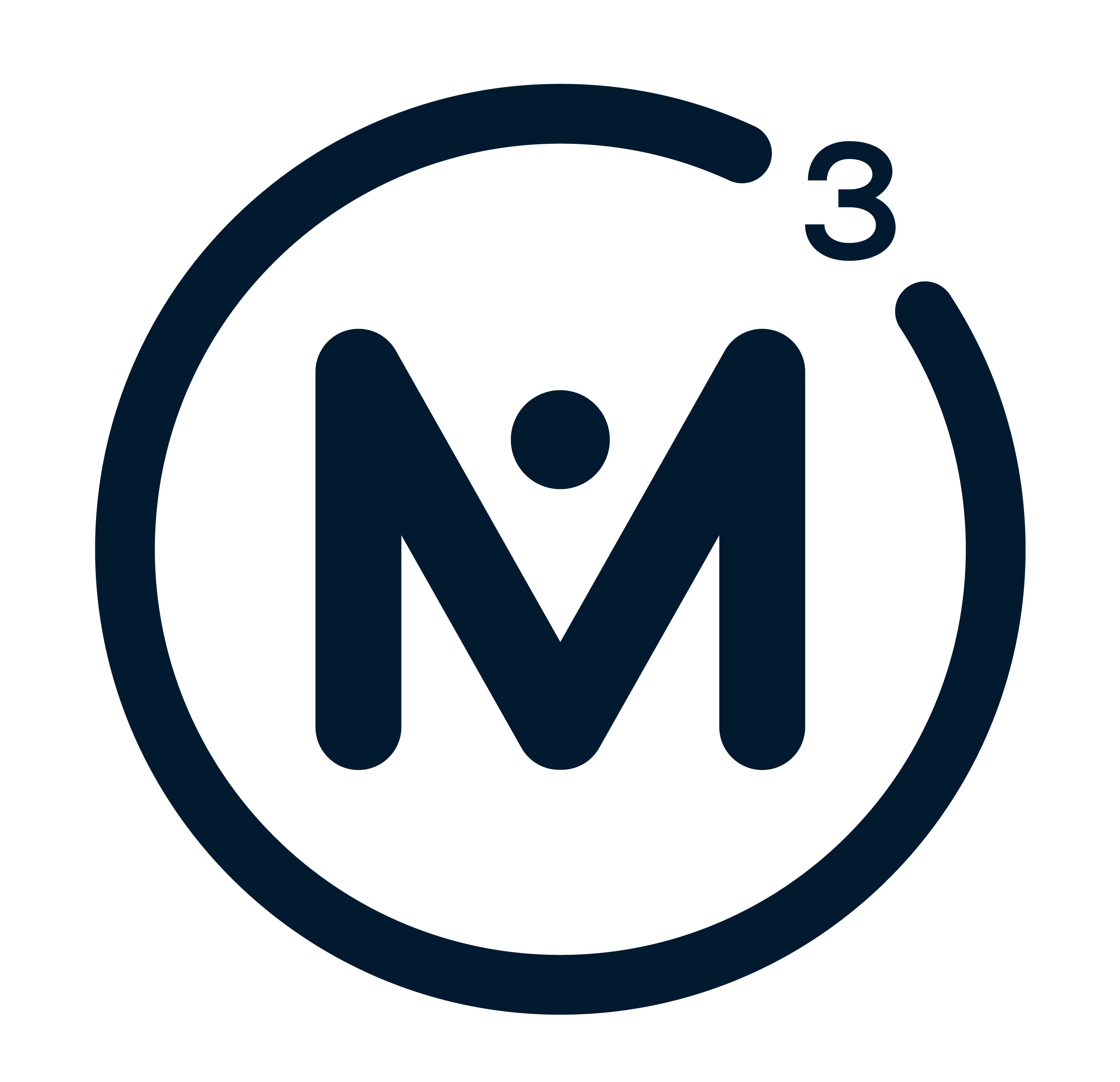
This was one of the most informative episodes I’ve heard. I’m fascinated by the connections I’ve made thinking about starting my school year!